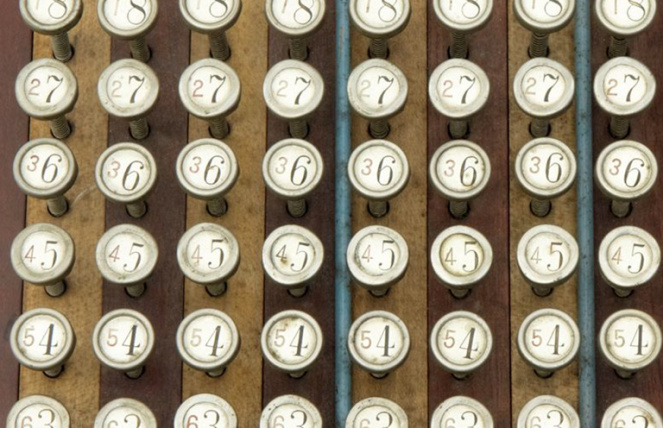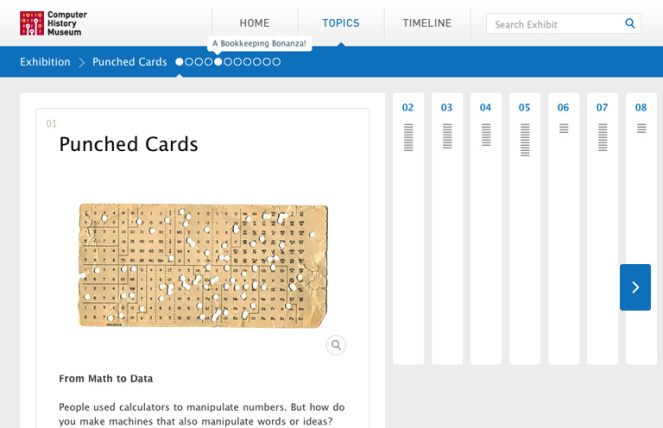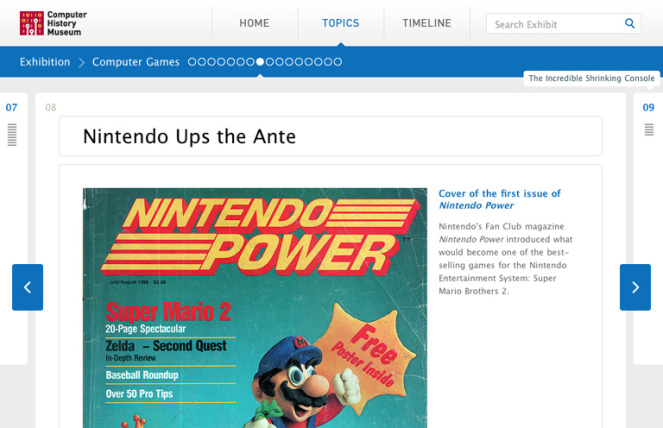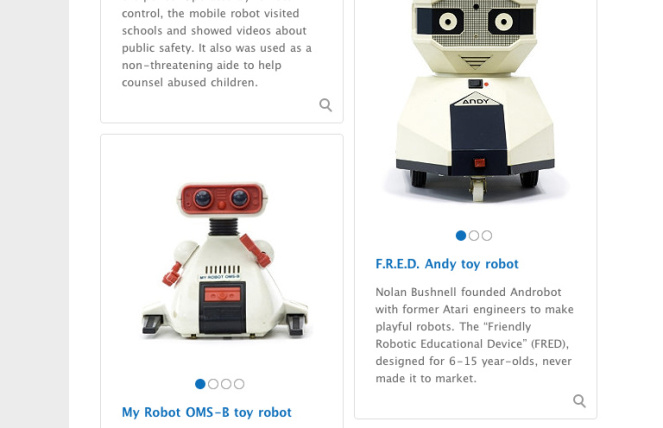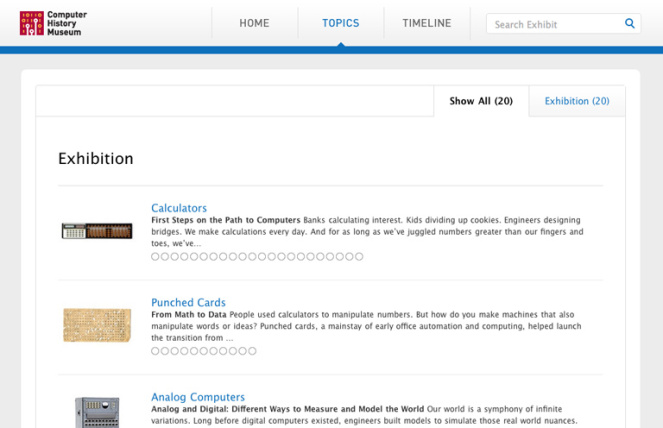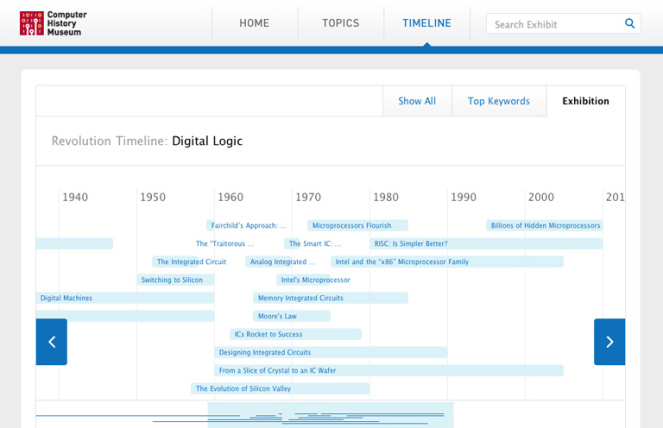Revolution
From abacus to IBM, this online exhibition chronicles the first 2,000 years of human innovation in the world of computing. In a story that is evolving before our eyes, this site reveals the fascinating, interlaced narrative of computers, the technology that drives them, and the people who made it happen.
The Computer History Museum is staging a major new exhibition covering the past two millennia of technology, right in the heart of the computer revolution: Silicon Valley. Drawing from one of the world’s largest collections of its kind, the exhibit features over 1,100 objects spread out over 25,000 square feet of new gallery space. This site was designed to extend the exhibit, capture behind-the-scenes information, facilitate surprising connections, and present stories without boundaries.
Although the site is about the growing realm of the digital, the interface design drew inspiration from a very analog source: the library bookshelf. This tangible system suggested intuitive content relationships based on category (what volumes are shelved together), and simple visual devices that indicate the depth of a story (like the thickness of a book). But the site departs from the analogy in its functionality. The site is designed to evolve along with the stories themselves: a powerful admin tool enables curators to refine and add to site content, allowing the story to remain alive and relevant. Also unlike a bookshelf, the site allows multiple entry points for discovering information. Some might prefer a linear experience, in which they explore exhibit topics, such as the history of analog computers, mainframes, or mobile computing. While others might opt for a non-linear narrative, using keywords or a timeline.
In this project, Second Story has pushed to tell a timeless story about a topic commonly thought ephemeral; and to make people think a little differently about the devices and technology that define our contemporary lives.
